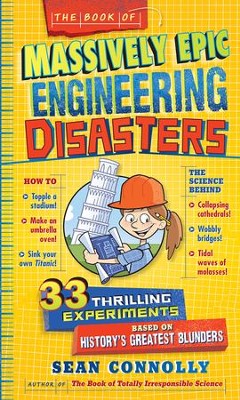
The Book of Massively Epic Engineering Disasters:
33 Thrilling Experiments Based on History's Greatest Blunders
by Sean Connolly
I wrote a blog post previously with my planning notes when doing this block on Zoom. Now I get to do it IRL with a group of students!
For each disaster I'll share my up-to-date notes and some photos. On April 23 we learned about the German airship Hindenburg.
- recall last week's disaster (The Boston Molasses Flood)
- pass out Science Club notebooks, have each child draw and write notes about his/her favorite experiment or about the disaster itself (they had so much fun playing with the Oobleck that I let them do it until the end of class)
- look up < molasses > on etymonline
- blow up balloons for this week's experiments ie. one balloon per child + one balloon per group (2) + one "secret ingredient" balloon per group (2)
Have large cardboard boxes ready to be balloon corrals. It really helps! For the "secret ingredient" balloons, use a watering can to pour as much water into a balloon as you can before blowing it up. It will be several tablespoons.

- read "The Hindenburg Crashes" information from The Book of Massively Epic Engineering Disasters, pp. 87-91
- do experiment #14 "Don't Give Me Static"
-
for each child:
a balloon
an empty soda can
piece of wool cloth (optional)
You will also need a long straight hallway or other open stretch of smooth floor. We used the concrete garage floor which had been swept clean.
The last time I did this experiment it was in the winter, which is actually the very best time to do experiments involving static electricity. Even with having wool dryer balls on hand to help with the charging (the children also used their hair), it was too humid out and we weren't able to get the balloons to hold the charge. As with other experiments that haven't worked out, I sent home experiment supplies so that children could try them again at home. I wonder if this experiment would work indoors in air conditioning?
- do experiment #15 "Down in Flames"
-
for each team (set up two):
a balloon
a "secret ingredient" balloon
a candle (the sort that sits in a glass cup)
an adult with matches
This experiment is dramatic and fun. The balloon breaking the first time will blow out the candle (and they had multiple theories as to why), so you will need to be ready to relight the candles for them. I didn't allow the children to move around while the candles were lit, so I kept the balloons in the corrals and brought them over to each team as they needed them. We have a clock with a second hand up on the Art Room wall but if your students have watches they coudl also use those to time the balloon the balloon the second time to see how long it lasts.
One question they had was, would it make a difference if you put HOT water in the balloon? Would the fact that the water is already hot mean that it can't absorb as much of the heat from the candle... so would the balloon pop???
I thought that was a great question! It would be fun to do the experiment again and try it out.
so strange
they carefully try to hold the "secret ingredient" balloon at the
exact same height
I have drilled into them that you only change ONE variable at a time!!
- pass out Science Club notebooks, have each child draw and write notes about his/her favorite experiment or about the disaster itself
I didn't get this out but you could definitely talk more about the Periodic Table of the Elements. You could set up the entire periodic table if time allowed, or just look at the cards for Hydrogen and Helium. This card deck is incredibly handy, and so versatile! Not to mention beautiful!!

The Photographic Card Deck of the Elements with Big Beautiful Photographs of All 118 Elements in the Periodic Table
by Theodore Gray
I do find it really sad that all of those people died in part because Germany had no other choice except to use hydrogen. The U.S. had more helium than any other country in the world and was straight up hoarding it. Congress even passed the Helium Control Act of 1927 banning the export of helium!
This post contains affiliate links to materials I truly use for homeschooling. Qualifying purchases provide me with revenue. Thank you for your support!

















 Immersive Experience
Immersive Experience Immersive Experience
Immersive Experience







No comments:
Post a Comment